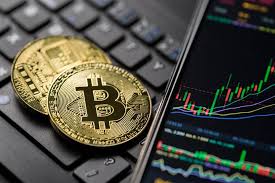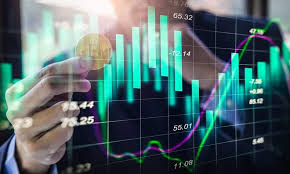
Comprehensive Crypto Trading Asset List for 2023
The world of cryptocurrency is constantly evolving, with new assets emerging almost daily. For traders and investors alike, understanding what assets are available is crucial for making informed decisions. This article provides a comprehensive crypto trading asset list to help you navigate the complex landscape of digital currencies. Additionally, you can explore related developments such as Crypto Trading Asset List https://fintecbuzz.com/web-global-holdings-inc-releases-new-teaser-trailer-for-highly-anticipated-cryptocake-streaming-tv-channel/ that may influence the market. Let’s dive into the various categories of cryptocurrency assets.
1. Major Cryptocurrencies
Major cryptocurrencies, often referred to as the “Blue Chip” assets of the crypto world, have proven to be reliable investments. These include:
- Bitcoin (BTC): The first and most well-known cryptocurrency, with a market dominance that often dictates the overall market trend.
- Ethereum (ETH): Known for its smart contract functionality, Ethereum has established itself as a leading platform for decentralized applications (dApps).
- Binance Coin (BNB): Originally created as a utility token for the Binance exchange, BNB has gained traction in various applications and services.
- Cardano (ADA): Recognized for its focus on sustainability and scalability, Cardano aims for a more balanced and secure ecosystem.
- Solana (SOL): Known for its high throughput and low transaction costs, Solana has gained popularity among developers and users alike.
2. Stablecoins
Stablecoins are designed to minimize price volatility by pegging their value to traditional fiat currencies or other assets. They are invaluable for trading and maintaining liquidity. Key examples include:
- Tether (USDT): One of the first and most widely used stablecoins, pegged to the US dollar.
- USD Coin (USDC): A fully backed stablecoin that aims for transparency in backing with cash and short-duration US treasury bonds.
- Binance USD (BUSD): Issued by Binance and pegged to the US dollar, providing a seamless trading experience.
- Dai (DAI): A decentralized stablecoin that is collateralized by Ethereum and other cryptocurrencies.
3. DeFi Tokens

Decentralized Finance (DeFi) is an emerging field that leverages blockchain technology to recreate traditional financial instruments in a decentralized manner. Noteworthy DeFi tokens are:
- Uniswap (UNI): A leading decentralized exchange protocol that allows users to trade cryptocurrencies without a centralized intermediary.
- Aave (AAVE): A decentralized lending platform that enables users to borrow and lend cryptocurrencies without the need for traditional banks.
- Compound (COMP): Similar to Aave, Compound allows users to earn interest on their crypto assets by lending them to others.
- Yearn.finance (YFI): A DeFi yield aggregator that optimizes earnings across various DeFi protocols.
4. Non-Fungible Tokens (NFTs)
Non-fungible tokens represent ownership or proof of authenticity of unique items on the blockchain. Their immense growth has opened new avenues for digital artists and creators. Prominent platforms and projects in the NFT space include:
- OpenSea: The largest marketplace for NFTs, allowing users to buy, sell, and create digital art and collectibles.
- Rarible (RARI): A decentralized marketplace that empowers users to mint and trade NFTs.
- CryptoPunks: One of the earliest NFT projects that has created a frenzy among collectors.
- Bored Ape Yacht Club (BAYC): A popular NFT collection that has fostered a vibrant community and high-value collectibles.
5. Emerging Assets
As technology advances, new cryptocurrencies and assets are continuously emerging. It’s important to keep an eye on potential projects that could become influential in the future. Some promising emerging assets include:
- Polkadot (DOT): A multi-chain framework that allows different blockchains to interoperate.
- Chainlink (LINK): A decentralized oracle network that connects smart contracts with real-world data.
- Avalanche (AVAX): A platform designed for launching decentralized applications and enterprise blockchain deployments in a highly scalable and customizable way.
Conclusion
The cryptocurrency market offers a vast array of trading assets, each with its unique attributes and potential for growth. Understanding the distinctions between these categories can aid investors in crafting a diversified portfolio. From major cryptocurrencies and stablecoins to DeFi projects and NFTs, there is no shortage of opportunities in the crypto space. Don’t forget to conduct thorough research and stay informed about emerging trends and technologies, as the landscape is always changing.